On this page
A distinctive approach to learning through making
Guided past President Stephen Beal, our private nonprofit college offers a rich curriculum of 23 undergraduate and 11 graduate programs, and is noted for its curricular interdisciplinarity, breadth of programs, and delivery to social responsibleness. Spread across two distinct campuses in the Bay Area, students experience immersive, interdisciplinary exposure that emphasizes theory and practice, helping them to gain the creative confidence and entrepreneurial skills needed for contemporary artistic practice.
Graduates are highly sought after by companies such as Pixar/Disney, Apple, Intel, Facebook, Gensler, Google, IDEO, Autodesk, Mattel, and Nike. Many alumni have launched their own successful businesses, and alumni piece of work is featured in major collections such as the Los Angeles County Museum of Art, MoMA New York, Guggenheim Museum, Whitney Museum, SFMOMA, The National Gallery of Fine art in Washington D.C., The Library of Congress, and Tate Modern in London.
Founded in 1907 by Frederick Meyer, CCA is currently expanding its San Francisco campus with new educatee housing and a new building by award-winning architecture firm Studio Gang.
President
Elevating art and pattern teaching
Come across President Stephen Beal
Stephen Beal was appointed president of California College of the Arts in May 2008, having served as provost at the college since 1997. Equally president, he champions CCA's academic vision to prepare students equally creative citizens who bring to their communities innovative problem-solving skills, an entrepreneurial spirit, and a want to engage issues.
Nigh recently, Aggravate led the development of an ambitious multi-twelvemonth plan to strengthen the CCA feel for future generations of students by unifying the academic program on an expanded San Francisco campus, dramatically increasing on-campus pupil housing, building the CCA Board of Trustees, and planning for the largest capital campaign in CCA history.
Since taking office, Aggravate has successfully completed major initiatives, including the $27.5 one thousand thousand Centennial Campaign; national accreditation visits from WASC (Western Clan of Schools and Colleges) and NASAD (National Clan of Schools of Art and Design); and the development and implementation of the 2016–2020 collegewide strategic program extension. Beal has played a meaning part in the expansion of the higher's programs and facilities and the implementation of key academic initiatives, all of which contributed to an overall enrollment increase of more than 70% since 2000. Significant improvements to CCA's existing buildings and development of new facilities during Aggravate's tenure include a new educatee residence facility in Oakland and a new award-winning Graduate Center in San Francisco.
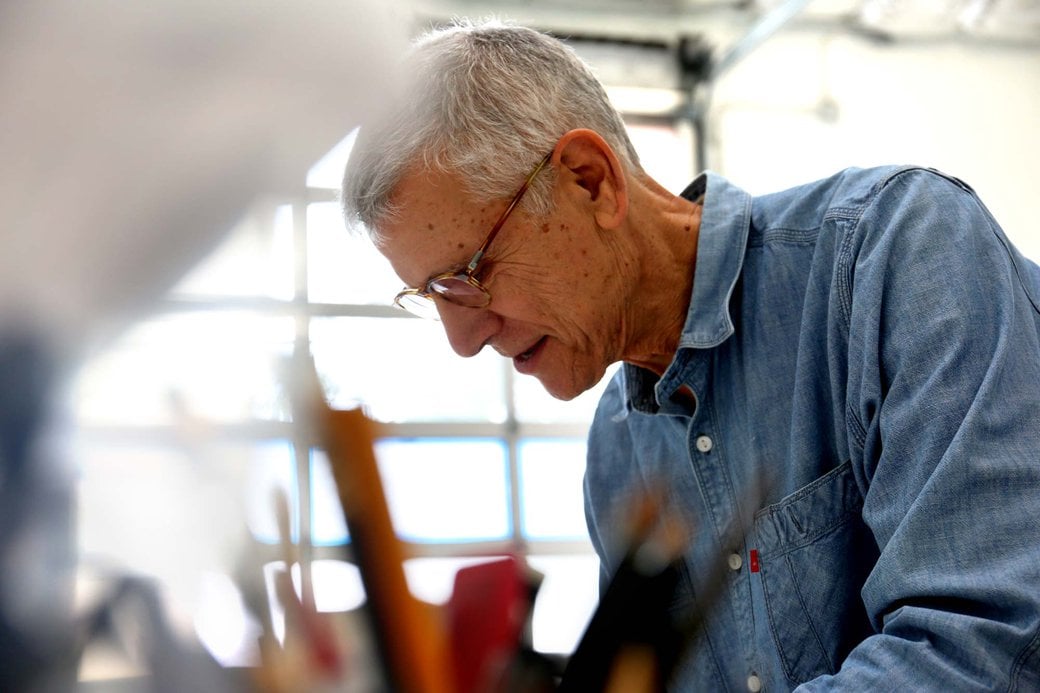
Stephen Beal working in his art studio.
President Beal'south background
Beal holds an MFA from the School of the Art Institute of Chicago (SAIC), where he was vice president of academic planning and associate vice president of academic affairs before coming to CCA. He was the atomic number 82 bookish administrator on the school's building and facilities projects, which included the acquisition of new property and major renovations of existing facilities. Previous to that he was chair of SAIC'southward graduate division, chair of its post-baccalaureate program, and a fellow member of the painting kinesthesia.
In addition to his prolific academic career, Beal is a practicing artist whose work has been exhibited nationally, including at renowned galleries such as George Lawson in Los Angeles and New Museum Los Gatos. Beal currently serves on the lath of trustees at the Asia Society Northern California in San Francisco and Creative Growth Art Center in Oakland. He also served on the board of trustees at Yerba Buena Middle for the Arts in San Francisco, and San Francisco Asian Contemporary Art and Design Consortium. He also has been an counselor to the American Picture Institute in Los Angeles, Girls Inc. of Alameda County, and the Asian Art Museum in San Francisco. He and his wife, Dee Hoover, reside in the East Bay. They have two children.
President's Sustainability Steering Grouping
The President's Sustainability Steering Grouping (PSSG) was established in 2009 to place means to showcase the college's ongoing commitment to sustainability and ensure the college's leadership role upholds specific values that govern an eco-conscious approach to learning. Since its formation, the PSSG has significantly heightened the college's overall commitment to sustainability.
PSSG argument of values
The PSSG, which consists of faculty, student, staff, and trustee representation, developed the following values that correspond the college's core principles as they pertain to sustainability. These basic tenets are drawn upon ofttimes to ensure all future growth—curricular, technological, architectural—takes into consideration these best-exercise guidelines.
- Minimize impairment and optimize benefits to the environment and order in our daily endeavors
- Apply the sustainability values we teach to our students to our facilities, transportation, and purchasing and investing practices
- Provide the tools and resource that motivate our customs members to be sustainability leaders
- Depict on and contribute to the resources, knowledge, and initiatives uniquely available in the San Francisco Bay Surface area
- Foster an academic and operational culture of continuing sustainability innovation
- Place and promote career opportunities in sustainable practices for our students
Dedicated to the legacy and longevity of CCA
The Board of Trustees works to ensure that CCA pursues its mission as defined in its governing certificate. The board's responsibilities include giving fit strategic direction to CCA; setting overall policy; helping define goals, fix targets, and evaluate functioning; ensuring the financial stability of CCA; and safeguarding the adept name and values of CCA.
Board officers
- Lorna Meyer Calas, Chair
- C. Diane Christensen, Past Chair
- Susan M. Cummins, Vice-Chair
- Kenneth M. Novack, Vice-Chair
- John Due south. (Jack) Wadsworth Jr., Treasurer
- F. Noel Perry, Secretarial assistant
Leadership
In class, on campus, and beyond
Academic leadership
CCA believes in fostering the artistic and bookish achievements of all faculty, and we piece of work to ensure a learning environs defined by its evolving, contemporary curriculum and powerfully effective pedagogy. Read almost CCA'southward assessment and accreditation.
- Tammy Rae Carland, Provost
- Julianne Kirgis, Acquaintance Provost
- Dominick Tracy, Associate Provost for Educational Effectiveness
- Keith Krumwiede, Dean of Architecture
- Helen Maria Nugent, Dean of Design
- Allison Smith, Dean of Fine Arts
- TT Takemoto, Dean of Humanities & Sciences
Read more than about our Faculty Governance and Union.

Speaker introductions during the 2017 Scholarship Dinner Awards Ceremony.
Senior chiffonier and administrative leadership
- Stephen Beal, President
- Tammy Rae Carland, Provost
- Susan Avila, Senior Vice President of Advancement
- Tricia Brand, Vice President of Diversity, Disinterestedness, Inclusion, and Belonging (DEIB)
- Scott Cline, Vice President of Enrollment Management & Auxiliary Services
- Nicolas Elsishans, Chief Fiscal Officer
- Mara Hancock, Main Data Officer
- Anthony Huberman, Managing director of CCA Wattis Institute for Contemporary Arts
- Maira Lazdins, Associate Vice President, Human Resource
- David Meckel, Director of Campus Planning
- Leigh Sata, Vice President of Operations & Capital Projects
- George Sedano, Vice President of Pupil Diplomacy
- Cathrine A. Veikos, Faculty Senate President
- Ann Wiens, Vice President of Marketing & Communications
Connecting our community in i location
CCA is creating a new educational experience by expanding its San Francisco campus to include state-of-the-art didactics facilities for all of our programs. Nosotros've also added more than housing to accommodate students in our living, learning laboratory. What began as an ambitious vision will soon be a porous, creative surround that supports all kinds of learning and making.
A historical decision
In 2006, CCA embarked on a journey to define its future with a singular goal in listen—enriching and enhancing the pupil experience. A series of intensive research and reflection workshops, visioning sessions, and endless meetings led to the evolution of a strategy that aimed to dream large, cultivate multifariousness, foster excellence, connect communities, and atomic number 82 responsibly. The event is an action plan that amplifies the culturally inclusive and passionately creative CCA experience.
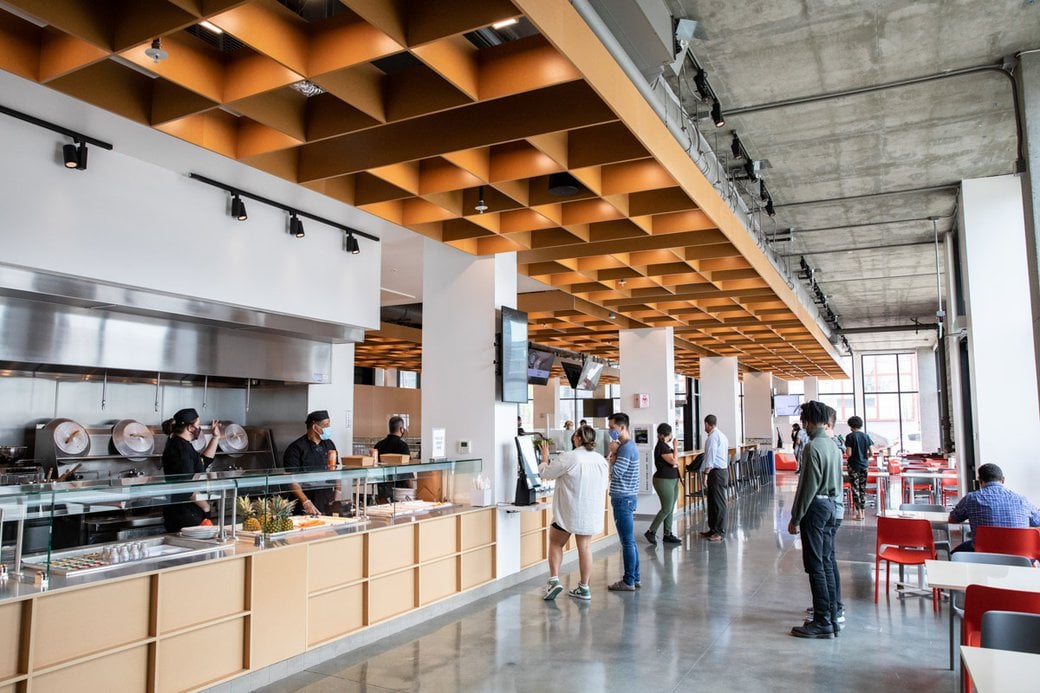
More than student housing
Opened in autumn 2020, Founders Hall, designed by Stanley Saitowitz | Natoma Architects and located in the eye of the campus, is dwelling house to more than than 500 students and the Makers Cafe dining hall. Simply 2 blocks away on Arkansas Street, the college recently opened Blattner Hall, a new housing facility featuring 200 apartment-style units for CCA graduate and continuing students, cheers to the generosity of CCA Trustee Simon Blattner.
Mission
CCA is a place of ingenuity and originality
Our students create cultural transformation
California College of the Arts educates students to shape culture and gild through the practise and critical study of fine art, architecture, design, and writing. Benefiting from its San Francisco Bay Area location, the college prepares students for lifelong creative piece of work by cultivating innovation, community engagement, and social and environmental responsibility.
Values
As an educational and cultural institution, CCA believes in fostering the creative and academic excellence of our students and faculty.
- Nosotros cultivate intellectual curiosity and gamble-taking, collaboration and innovation, compassion and integrity
- Equally a global citizen and good neighbour, CCA believes in its role every bit a proponent of social justice and community engagement
- We promote multifariousness on our campuses by improving access and opportunities for underrepresented groups, and we see this endeavor equally vitally enriching for anybody
- We value sustainability and believe that as a school of the arts we have a unique ability and an upstanding responsibility to shape a culture that is more than environmentally responsible
- Nosotros sympathise the importance of creative economies and the role of artists, designers, architects, and writers in solving social, cultural, environmental, and economic bug
Diversity Goals
A central theme of CCA'due south five-year strategic plan is to cultivate diversity past accomplishing the post-obit three goals through a series of initiatives.
Increment racial, socioeconomic, and global multifariousness among students, staff, faculty, and trustees
- Advertise positions in resource specifically aimed at professional communities of color
- Include specific language in chore postings that encourages diverse and culturally competent applicants
- Increase visibility through faculty and staff of colour fellowship with institutional resource to support meetings and activities
- Commit additional resource for potential opportunity hires for successful candidates of colour
- Explore collaborating with our AICAD partners on a "grow your own" visiting-faculty program (e.g., a "postal service-MFA" fellowship for new faculty of colour)
- Increase diversity scholarships for students
- Create partnerships with local feeder schools to improve outreach to potential students of color and foster a successful pipeline through recruitment to retention, success, and graduation
- Foster mentoring/outreach between students and faculty of color; create a faculty mentor to students of color position
Develop our pedagogy and curriculum to reflect social and cultural diverseness
- Explore ways to include cultural competency and literacy in beginning-level required courses
- Launch and support the ENGAGE at CCA programme that strengthens CCA'south values of customs partnership and social justice
- Organize a diversity curriculum committee of faculty leaders who can oversee the enhancement of diverseness in the curriculum and sponsor diversity didactics grooming
- Provide grooming for faculty that addresses incorporating multifariousness into their curricula, working with a diverse grouping of students, and adopting transformative pedagogies
- Acquit "state of affairs" survey to get a good sense of where/how diversity currently exists in the major curricula
- Provide rewards for faculty (line release, curriculum evolution grants) to diversify their courses
Build a campus customs that supports and values multifariousness
- Develop a diversity news and resources section on the college website
- Explore hiring a primary diversity officer who will ensure a continued focus on and comeback in multifariousness in all areas
- Raise the Center Student Grant program to incentivize students who are working on projects continued to social justice and multifariousness
- Form ongoing student affinity/identity groups and provide adequate institutional support
- Make diverseness a priority outside of targeted diversity programming, while also continuing to build specific variety events and symposia
- Create more comfortable gathering spaces to encourage organic community building
- Create a required cultural competency training for all staff (especially focusing on student services staff, counselors, and advisors) and faculty
- Ensure all orientations (student, faculty, staff, and trustees) include introductory conversations virtually community standards and diversity
Sustainability goals
As a college of art and design, CCA has an upstanding responsibility to shape a culture that's environmentally responsible. Our students are the people who will exist creating the objects, environments, and experiences of the time to come. Nosotros actively piece of work toward sustainability in pattern, construction, operations, and curriculum.
To catalyze the learning opportunities inherent in our new San Francisco campus, CCA will expand and enrich its sustainability curriculum to involve all bookish programs, and the campus itself volition serve as a laboratory for sustainable practice, where makers can experiment and innovate. Learning will happen everywhere and will be visible to all.
The college has outlined ambitious sustainability objectives, including strategies for the following:
- Water and free energy generation, usage, and conservation
- Healthy air quality
- Environmentally safety artmaking materials and practices
Since its opening in 1999, CCA's San Francisco campus has been a image of sustainability, and in 2001 it received a COTE Acme Ten Greenish Building designation. Our intention is for CCA's new, reconfigured campus to function at an even higher level of sustainability by serving as a learning center with its sustainability performance visible and understandable to the students, kinesthesia, staff, and others who will use it. Studio Gang and the higher are working with ecology experts from the Rocky Mountain Institute and Atelier Ten to assist accomplish these goals.
CCA is various and sustainable
A 21st century art and design pedagogy
Through coursework rooted in the many facets of a studio practice, a rigorous general instruction curriculum, and enriching co-curricular experiences, students prepare for a lifetime of creating work that matters. Our learning outcomes ensure graduates demonstrate the perceptual vigil, conceptual agreement, and technical facility sufficient for them to begin work on a professional level.
Your right to know
We're required to provide current and prospective students with an overview of information, including general data well-nigh the college, financial aid, public safety, and copyright infringement.
Land Acknowledgment
CCA is situated on the traditional unceded lands of the Ohlone peoples
At CCA, we sympathize Country Acknowledgment as a transformative act meant to confront our identify on Native Lands and to build mindfulness of our present participation in colonial legacies. As CCA kinesthesia, staff, and students, we affirm our responsibility to dilate Indigenous voices, we stand in solidarity with local Indigenous communities, and we respect local Ethnic protocol. We practice Land Acknowledgment at CCA in club to teach and promote greater public consciousness of Native sovereignty and cultural rights.
Background on CCA'due south Land Acknowledgment
CCA's commencement official public Land Acknowledgment was delivered in February 2019 by President Stephen Beal at a groundbreaking ceremony for Founders Hall. Prior to that, Land Acknowledgment had already begun to sally every bit a cross-bounded practice in individual courses across CCA.
Land Acknowledgment is a formal argument that recognizes and respects Ethnic Peoples equally traditional stewards of this land and the indelible human relationship that exists betwixt Ethnic Peoples and their traditional territories.
This Land Acknowledgment was collectively authored by the CCA Decolonial School and in dialogue with CCA Indigenous consultant Kanyon CoyoteWoman Sayers-Roods (CEO of Kanyon Konsulting, Founder of Indian Canyon Two-Spirit Social club, Cultural Managing director and COO of Costanoan Indian Inquiry, and Cultural Representative and Native Monitor for Indian Coulee Mutsun Band of Costanoan Ohlone People.)
History
Where craftsmanship and innovation thrive
A legacy of forward-thinking making
CCA was founded in 1907 by Frederick Meyer to provide an didactics for artists and designers that would integrate both theory and practice in the arts. Meyer, a cabinetmaker in his native Federal republic of germany, was involved with the Arts and Crafts movement and immigrated to San Francisco in 1902. Hither, he established a cabinet shop and taught at the Marker Hopkins Institute of Fine art. Shortly after the 1906 earthquake and burn destroyed both his shop and the institute, Meyer publicly articulated his dream of a schoolhouse that would fuse the practical and ideal goals of the artist.
Meyer founded the School of the California Social club of Craft in Berkeley with $45 in greenbacks, 43 students, iii classrooms, and iii teachers. In 1922, he bought the four-acre James Treadwell estate at Broadway and Higher Avenue in Oakland. The Oakland campus witnessed much new construction after Earth War Ii, and the college established a presence in San Francisco starting in the 1980s, using leased space for its architecture and design programs; the tremendous growth of those departments inspired the institution in 1996 of a permanent campus in the Potrero Hill neighborhood, which continues to grow.
Integration of theory and exercise
The Arts and crafts move originated in Europe during the belatedly 19th century as a response to the industrial aesthetics of the machine age. Followers of the movement advocated an integrated approach to art, pattern, and craft. Meyer'south Craft-inspired vision continues to present day CCA.
Throughout its 100-twelvemonth-plus history, CCA has continued to add undergraduate and graduate programs in the core disciplines of fine fine art, design, compages, and humanities and sciences. The open layout of each campus positions students in proximity to other media, providing myriad opportunities to generate hybrid fields of report and new ways of making through creative adjacencies, and the curriculum explores the full spectrum of theory, practice, and creation.
Rooted in social activism and engagement
CCA has always engaged art and design to impact larger societal issues and facilitated opportunities for students to make powerful contributions to the social good. The Eye for Fine art and Public Life opened in 1998 on the Oakland campus as a specific response to the need for community-based arts programming, and it continues to expand and enhance its activities. That aforementioned year, the college established the CCA Wattis Constitute for Gimmicky Arts on the San Francisco campus as a forum for the discussion and presentation of leading-edge art and civilization.
CCA's alumni are agents of change. The accomplishments of our recent alumni are varied and far-reaching—creating characters for animated Pixar films, exhibiting work at the Cannes and Sundance movie festivals, creating an Oscar-winning documentary moving-picture show, and using design strategy to improve healthcare in America, among many other stories of using fine art and design to change the earth.
"Equally the part of creativity throughout our society and economy is increasingly recognized, CCA's founding ideals take never been more than relevant. Artists, architects, designers, and writers accept become leaders in a civilisation that relies on a combined expansion of technological innovation and artistic content."
CCA President
Epitome Gallery
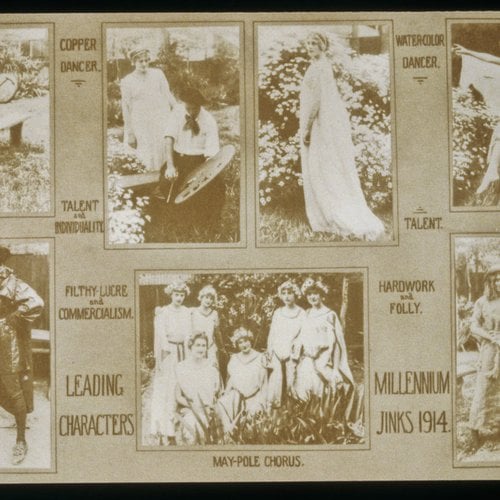
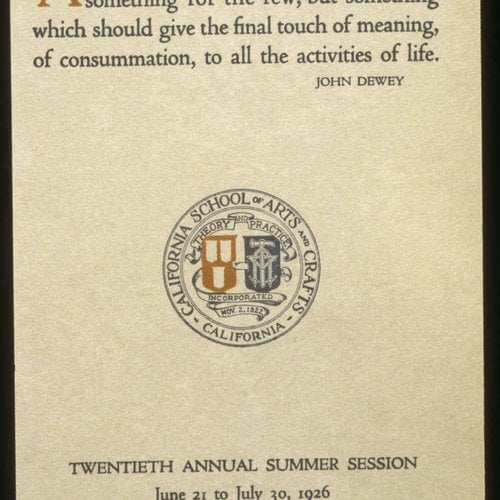
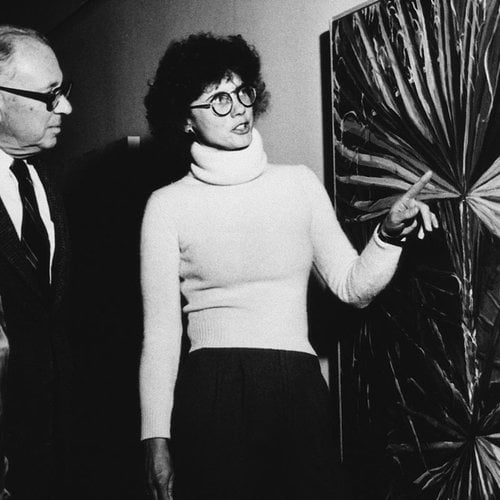
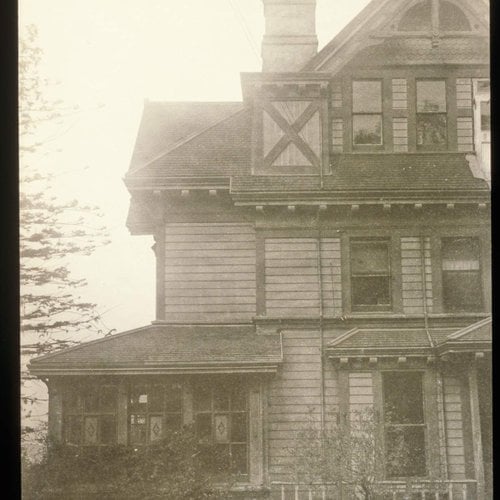
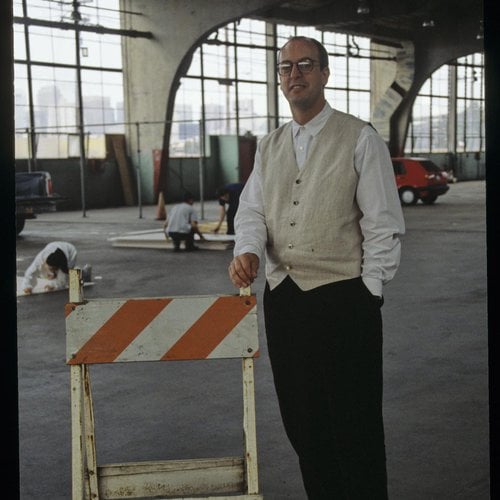
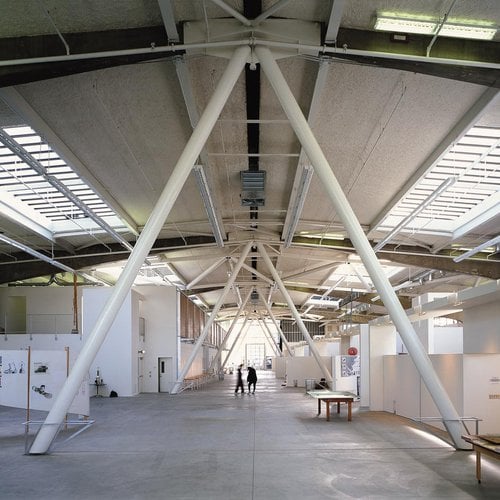

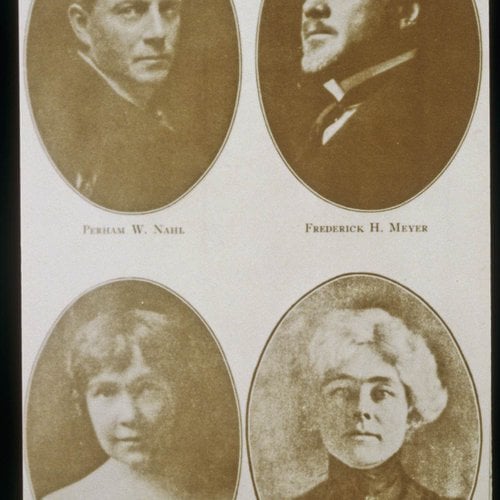
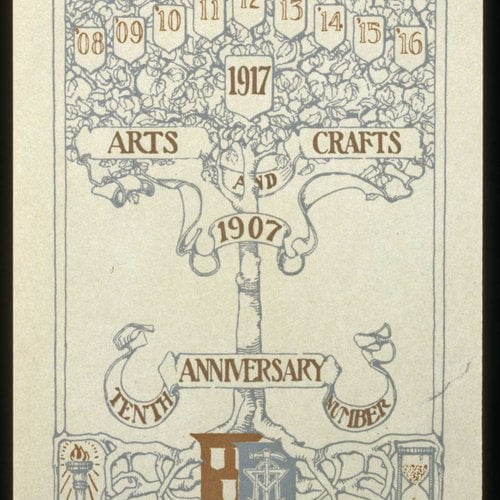
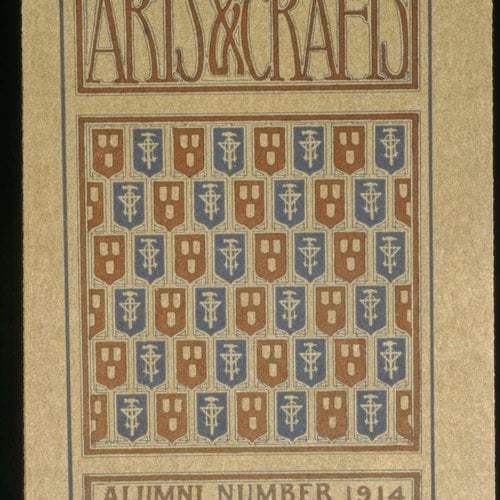
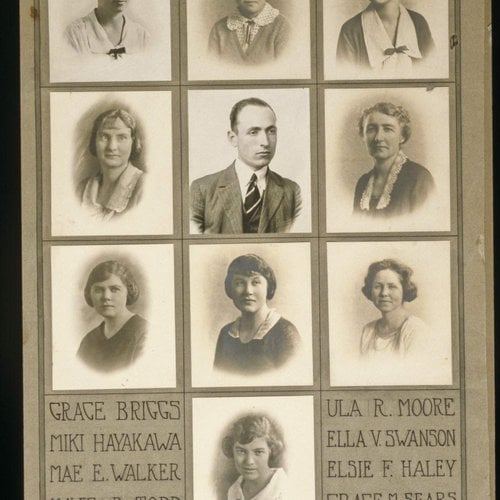
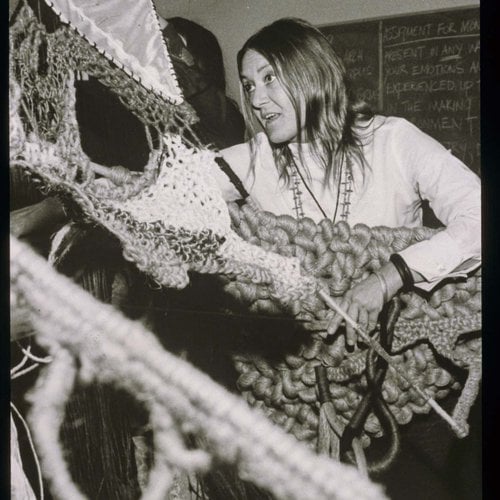
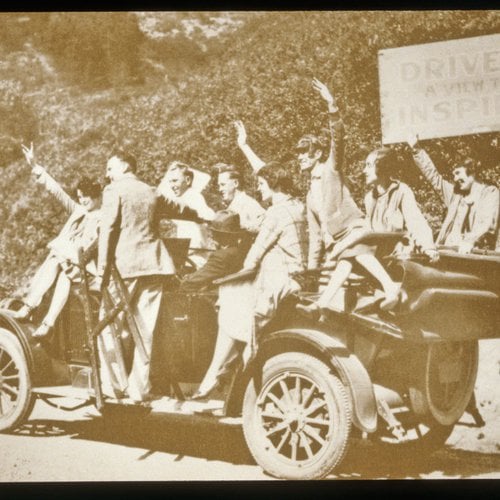
View full gallery
The earth will know our name
The higher has inverse its name three times in 100 years.
1907: School of the California Society of Arts and crafts
In Berkeley, Meyer founded the School of the California Club of Craft with the ceramicist Rosa Taussig and the artist Perham West. Nahl. Meyer'southward married woman, Laetitia, was the school secretary. Talented designer Isabelle Percy West joined the faculty that fall.
1908: California Schoolhouse of Arts and crafts
Meyer changed the name later the first twelvemonth, and research has not turned up a reason.
1936: California College of Craft
The school was incorporated as a nonprofit institution and granted collegiate status in 1922; however, it was withal referred to as California School of Arts and Crafts in printed materials until 1936, when it became California College of Arts and Crafts.
2003: California Higher of the Arts
Recognizing the breadth of the college'southward programs, the Lath of Trustees voted unanimously to change the name to California College of the Arts.
Key historical milestones
- 1906: Following the destruction of his dwelling house and workshop in the San Francisco earthquake, German-born cabinetmaker and art teacher Frederick H. Meyer speaks at a meeting of the local Arts and Crafts Society about his thought for a new "practical art school."
- 1907: Frederick Meyer establishes the Schoolhouse of the California Lodge of Arts and crafts in the Studio Building on Shattuck Avenue in Berkeley. Initial faculty salaries range from $40 to $60 per calendar month.
- 1908: The school is renamed California Schoolhouse of Craft and graduates its first course of five students. Many of these graduates had been students of Meyer'southward at the Marking Hopkins Constitute of Art in San Francisco. Having outgrown its location, the schoolhouse moves to 2130 Center Street in Berkeley.
- 1910: The school moves over again to 2119 Allston Way, site of the old Berkeley High School.
- 1922: With enrollment increasing post-obit the influx of veterans of World War I, Meyer searches for a permanent home for the college. He purchases the four-acre James Treadwell manor in Oakland for $lx,000. For the next four years, Meyer leads a coiffure of student, kinesthesia, and alumni to transform the rundown estate into a campus. The Meyer family moves into the superlative flooring of the Treadwell mansion (at present called Macky Hall).
- 1926: The school completes its move to the new campus at 5212 Broadway, where it remains today.
- 1968: Two major buildings on Oakland campus are completed. Founders Hall, honoring Frederick and Laetitia Meyer, Isabelle Percy W, and Perham Nahl, houses the library, media center, and classrooms. Martinez Hall, honoring teacher Xavier Martinez, houses the painting and printmaking programs.
- 1973: The Noni Eccles Treadwell Ceramic Arts Center opens.
- 1977: Macky Hall is placed on the National Register of Historic Places.
- 1985: First Apple tree computers get in on campus.
- 1987: Blueprint and compages programs movement to leased space on 17th Street in San Francisco.
- 1989: The Oliver Art Center, including the 3,500-square-foot Tecoah Bruce Galleries, opens on the Oakland campus.
- 1995: The college launches the comprehensive Campaign for CCAC to raise funds for the renovation of a new San Francisco campus and programmatic initiatives. The higher purchases a building in lower Potrero Loma to create new permanent San Francisco campus.
- 1996: First stage of the renovation of the new San Francisco campus completed. Pattern and compages programs move to new building.
- 1998: The college establishes the Institute for Exhibitions and Public Programs, now called CCA Wattis Institute for Contemporary Arts. Noted artist residency program Capp Street Project becomes part of the Institute for Exhibitions and Public Programs. Center for Art and Public Life is established.
- 1999: The college celebrates the completion of the San Francisco campus with an opening gala. The new 160,000-foursquare-foot campus includes the Logan Galleries, the Tecoah Bruce Galleries, private studio spaces for graduate students, Simpson Library, Timken Hall, instructional studios and classrooms, and academic and administrative function infinite.
- 2001: Institute for Exhibitions and Public Programs is renamed Wattis Plant for Contemporary Arts in honor of philanthropist Phyllis Wattis.
- 2002: New student housing facility Clifton Hall opens on Oakland campus.
- 2003: Centre for Art and Public Life receives $5 million endowment—largest gift in history of the college. Reflecting the breadth of its programs, the college changes its name to California College of the Arts. New Graduate Centre opens on San Francisco campus.
- 2008: The college completes the $27.5 meg Centennial Campaign to fund financial assistance endowment, facilities improvements, and academic programs.
- 2011: The college purchases a two-and-a-half-acre (approximately 102,000 square feet) vacant lot from Greyhound Lines, Inc. in the Mission Bay surface area of San Francisco for future growth.
- 2016: The college announces plans to aggrandize its campus in San Francisco and selects Studio Gang to blueprint the new campus.
- 2018: Blattner Hall opens at 75 Arkansas Street near San Francisco campus. CCA has more student housing than ever before. Structure begins at 188 Hooper, the future residence hall for 500 students.
A community of art and blueprint giants
CCA faculty and alumni take been on the forefront of seminal art movement over the terminal 50 years. We instigated the ceramics revolution of the 1960s, which established that medium as a fine art; pushed forward the photorealist move of the 1970s; led the Bay Expanse Figurative art move; and made prominent piece of work in Conceptual art, minimalist sculpture, painting, pic, and contemporary graphic and product design.
Notable CCA alumni and past faculty
- Robert Arneson
- Robert Bechtle
- Squeak Carnwath
- Rob Epstein
- Viola Frey
- Neil Grimmer
- David Ireland
- Wolfgang Lederer
- John McCracken
- Richard McLean
- Manuel Neri
- Toyin Ojih Odutola
- Nathan Oliveira
- Dennis Oppenheim
- Lucille Tenazas
- Hank Willis Thomas
- Michael Vanderbyl
- Martin Venezky
- Peter Voulkos
- Wayne Wang
Today's CCA faculty are influential scholars and expert practitioners in their fields, helping CCA go ane of the best fine art schools in the U.S. today. The college draws elevation faculty from the region'south flourishing professional communities in architecture, business organization, design, writing, and the arts. Many of our faculty members work for leading Bay Area companies such as Apple, Gensler, Google, LucasArts, and Pixar, and many of them are principals of their own firms in compages, consulting, design, animation, or motion picture.
The listing of their awards, accolades, and publications is staggering. They take won Academy Awards, Fulbright fellowships, the Rome Prize, the MacArthur Award, Emmys, Guggenheim fellowships, AIGA medals, and more.
Careers
Excel as a professional
In a hub of curiosity and modify
CCA is an equal-opportunity employer. Our greatest nugget is our talented community that collaborates and innovates from our San Francisco Bay Area campuses. CCA is ideally positioned so all who work here can uphold social and environmental responsibility through creative practice.
Work at CCA
Join top-notch faculty and i of the most various faculty cohorts of all AICAD schools. CCA'southward 86 full-time and 334 part-fourth dimension faculty are accomplished educators, academics, practitioners, and researchers whose breadth and depth of expertise inspires students to accept creative risks in the pursuit of purposeful work.
We besides have full- and part-time opportunities available for staff, as well equally work-study and other campus jobs for students so they can earn financial support and task skills while attending art school in San Francisco.
Source: https://www.cca.edu/about/


Komentar
Posting Komentar